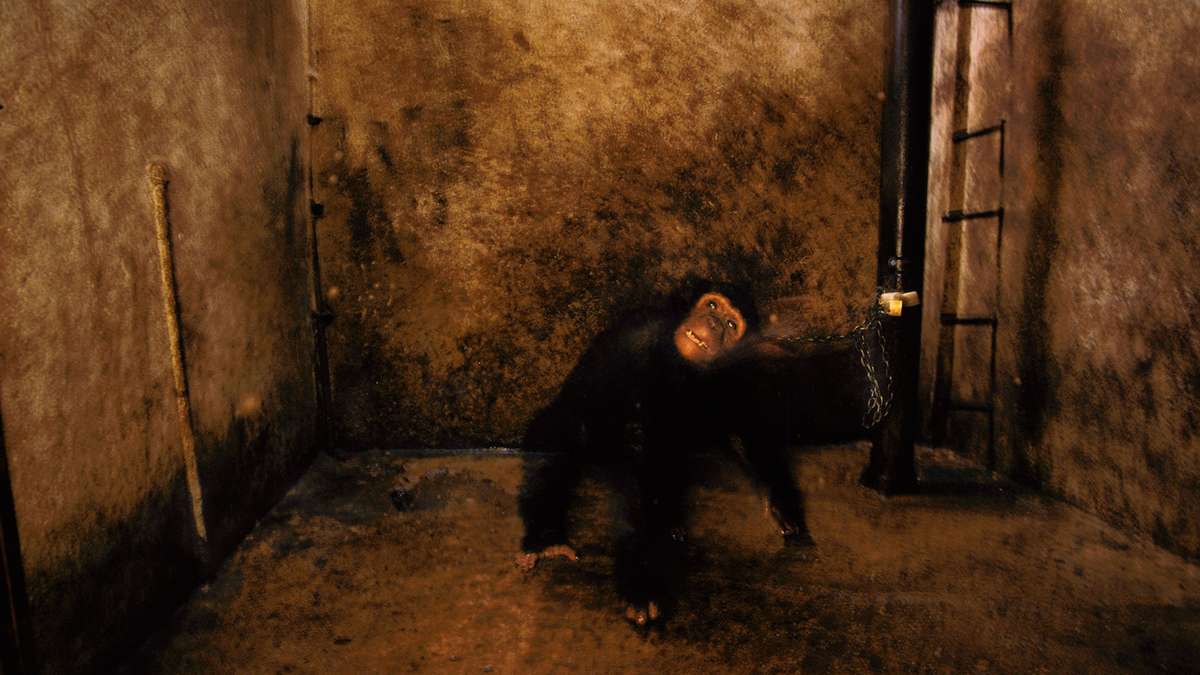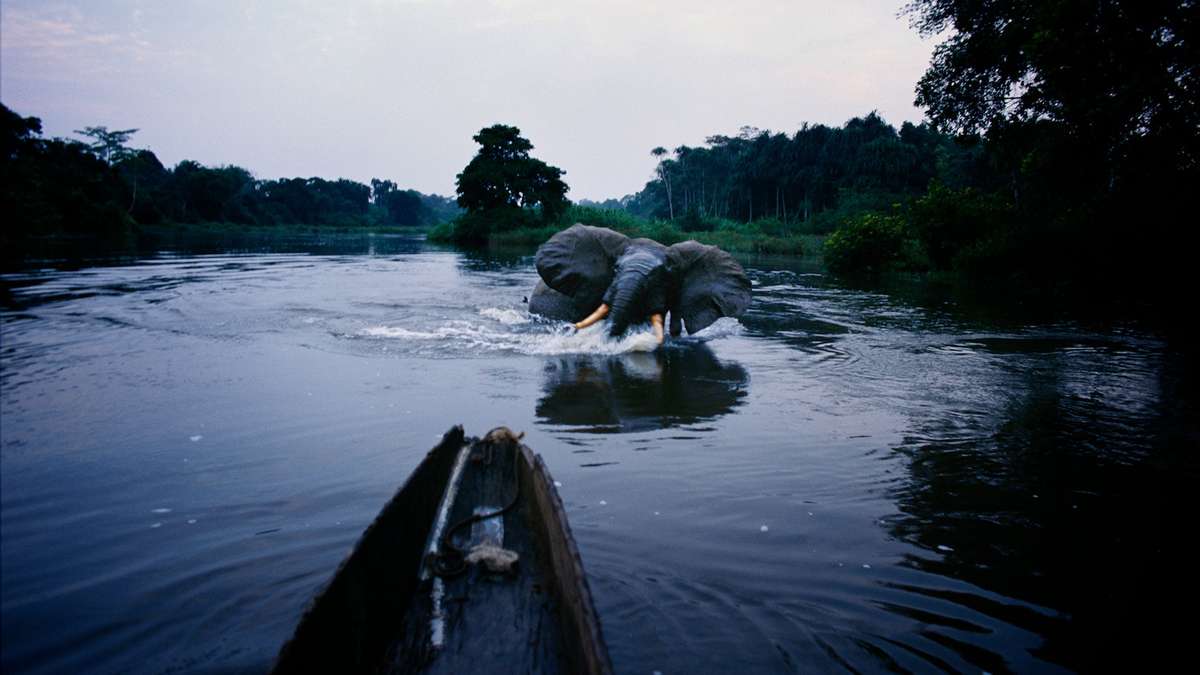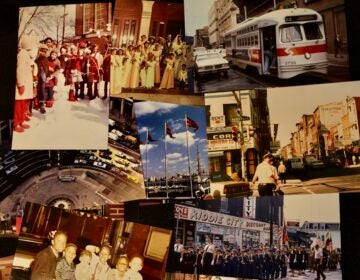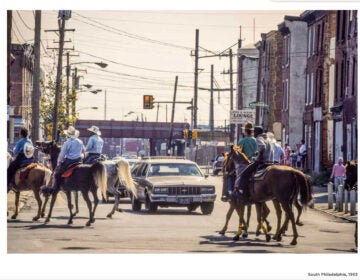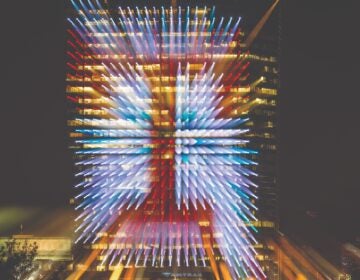Michael Nichols’ virtual safari remembers the magic of photography
Photographs used to be magic: prestidigitation performed by alchemists armed with white umbrellas, light meters, lenses, and endless rolls of film. They’d fiddle, tweak, squint upward, close the shutter, and then disappear into darkness to work their charms.
Those days are so over.
Technology has made anybody with a smart phone and an opposable thumb a picture-taker. You can now take a picture with one hand … while waterskiing and eating a sandwich. The results will be sharp, clear, perfectly lit … and whatever the opposite of magic is. Our devices are littered with the evidence.
In the proper hands, however, technology enhances the ability to capture an instant of magic. In “Wild: Michael Nichols,” the Philadelphia Museum of Art presents the work of an internationally known photographer whose career has benefited from, but not required, technical advancements.
Into the wild
Nichols has spent a career in places most will never go, recording threatened species and disappearing vistas, waiting days, even months, for just the right image. He spent three months in India for a single photo of a tiger, waited hours on a Gabon beach for hippos to go swimming (“Surfing Hippo, Loango National Park, Gabon,” 2003), and practically became one of a family of mountain gorillas in Rwanda.
In the Congo Basin of Africa, Nichols trekked 2,000 miles in 15 months with scientist J. Michael Fay to produce the book “The Last Place on Earth” (2005). That project, along with his earlier book “Brutal Kinship,” form the main themes of “Wild.”
Though this is the first time his work has been exhibited in a museum, Nichols has been well exposed, particularly in National Geographic. After several years as a contributor, he joined the staff in 1996, was named editor-at-large in 2008, and recently retired from the publication, his valedictory being a 2016 issue on Yellowstone National Park.
Art in conversation
Curators Peter Barberie of PMA and Melissa Harris, author of “A Wild Life: A Visual Biography of Photographer Michael Nichols” (Aperture, 2017) juxtapose Nichols work with pieces from the collection, setting up a subtle conversation about human interactions with nature over time and across cultures.
Near Nichols’ photo of elephants whose parents are missing (“Orphan Elephants, David Sheldrick Wildlife Trust, Nairobi National Park, Kenya,” 2011), stand a 19th century chair and footstool made of exquisitely carved ivory — the main reason young elephants become orphans.
Technology has extended Nichols’ reach as a photographer. Camera traps and robots have been invaluable in remote areas where it is impossible to stay in position long enough or get close enough to, for example, a tiger leaping overhead. The animal triggers the shutter, or as Nichols puts it, “They take their own picture.”
Four keys to capturing wild photographs
Listening to Nichols describe his methods, it’s clear that, though technology enables anybody to accidentally shoot an amazing picture, regularly doing so takes more than sophisticated equipment. Walking through “Wild,” Nichols talked about the approach he’s developed over 40 years.
Invisibility: When shooting, Nichols tries “to not be there.” Whether through concealment, taking time to blend into the landscape, or using remote equipment, his objective is for the image to be completely natural, as if no one were looking.
Patience: It took Nichols 11 months to photograph lions in Tanzania, and he adapted to his subjects. Working at night to match their activity, he used special lighting to avoid blinding his prey or alerting them to the camera’s presence.
Anticipation: Patience comes more easily when you know why you’re waiting, and Nichols usually does. In Kenya, he took a guide’s advice and set up near a grove of trees, where the elephants he sought would gather in the heat of the day. With the hippos in Gabon, Nichols knew what they were likely to do, and just waited on the beach. His photos are the result of understanding the animals and being available at precisely the right moment.
“If we’re going to have elephants, if we’re going to have lions, we have to work with them,” he says. “We have to let them live.”
Break rules: “The only way you can make a great photograph is to break some rules,” Nichols says. Working on the National Geographic’s Yellowstone issue, Nichols was treated like any other visitor in terms of access. Instructions which, presumably, he mostly followed. However, when he made the spectacular “Grand Prismatic Spring, Yellowstone National Park” (2014), let’s just say he deviated from the prescribed regulations. Polite son of Muscle Shoals, Alabama, that he is, Nichols made sure to apologize to his hosts — after he’d gotten the shot he wanted.
In addition to making images to inspire reverence for the natural habitat and its inhabitants, Nichols’ career reminds a world awash in too many just-because-I-can pictures of the magic in a single photograph.
—
Wild: Michael Nichols runs through Sept. 17 at the Philadelphia Museum of Art, 2600 Benjamin Franklin Parkway, Philadelphia, PA 19130; 215-763-8100; philamuseum.org
WHYY is your source for fact-based, in-depth journalism and information. As a nonprofit organization, we rely on financial support from readers like you. Please give today.



